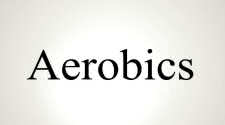Flying Aerobics - Exercise during Plane Flights

Never be afraid to try new ways towards reaching ultimate fitness in life.
Airlines are beginning to promote in-flight aerobics to decrease the negative effects of flying. Jet lag and the stress of flying can leave travelers weary from long
hours spent in terminals and on planes. The added effects of limited movement, dehydration and time changes result in discomfort for even the best-conditioned athletes.
In fact, a highly tuned athlete may feel the physical effects of travel more than a less-body-conscious, sedentary traveler.
"Plane Aerobics" is an exercise video developed by Northwest Airlines for passengers to watch and participate in from their seats prior to landing. The exercises leave
them feeling relaxed and less stiff and experiencing less leg edema.
Activity is generally recommended during long flights. If possible try to get an aisle seat. Get up several times during a flight- hourly if you can-and take a walk
down the aisle. You can also do some deep knee bends and stretch in the space provided by the rest-rooms. If you are confined to your seat, performing isometric contractions
with the muscles in your legs and abdominals will hinder fluid pooling. In addition, neck and shoulder rolls will help alleviate stiffness. Other in-flight recommendations
to avoid travel fatigue include the following:
» Drink copious amounts of water or other nonalcoholic, non caffeinated beverages.
» Eat light during the flight. Go higher in carbohydrates when advancing in time zone and higher in protein when re-turning. Always limit fats and salt. Most airlines
now provide healthier meals upon request; simply call 24 hours prior to your flight to arrange for a special low fat meal or fruit plate.
» Catnap when you can to relieve stress and adjust to new time zones easier.
» Wear loose clothing and shoes.
» Carry gum or nasal decongestant spray to avoid in-flight ear blockage.
» Exercise outdoors in the sunlight upon arrival. This will not only help you feel better, but also speed the resetting of your internal clock.
Follow these tips and your common sense, and you will be better able to cope with the stress involved in flying.
Motor Skill vs. Fitness
Physical fitness is only one aspect of what makes one athlete superior to another. Other factors include motivation and motor skills. Most experts agree that, while you can do a lot through training to improve your fitness level, there's very little you can do to modify your motor skills.The four factors that affect motor performance are balance, agility, coordination and speed. These are primarily based on your genetic makeup, and together and separately they help determine your skill and aptitude for a particular sport. In that respect sports are a lot like dancing: Some people are born with rhythm; others are not.
As stated above, however, you can improve your fitness level dramatically through training. The five basic components of physical fitness are cardio respiratory endurance, muscular strength, muscular endurance, flexibility and body composition. The importance of each component varies from one sport to the next. A football player or bodybuilder needs a higher degree of muscular strength than does a marathon runner, whose main requirement is cardio respiratory endurance. In addition, certain sports require a lower bodyweight, while others may benefit from a higher mass.
To determine your aptitude for a particular sport, simply look into the specific mental, motor and physical requirements. Then analyze how you fit those conditions and what your potential is for improvement. In the case of elite athletes it appears that they are born to excel. As for recreational athletes, we must simply participate for the sheer joy of it rather than frustrating ourselves by seeking perfection.